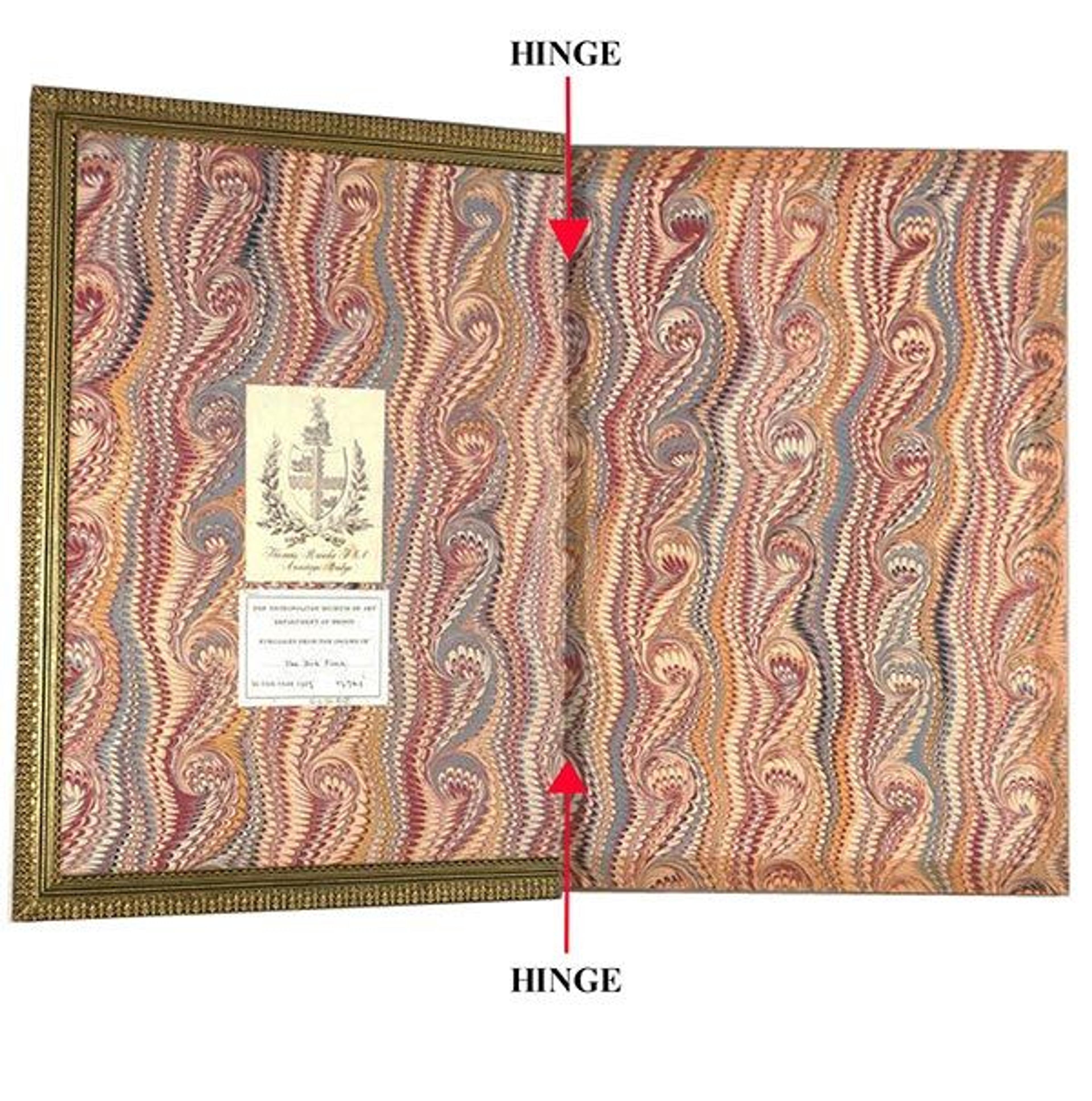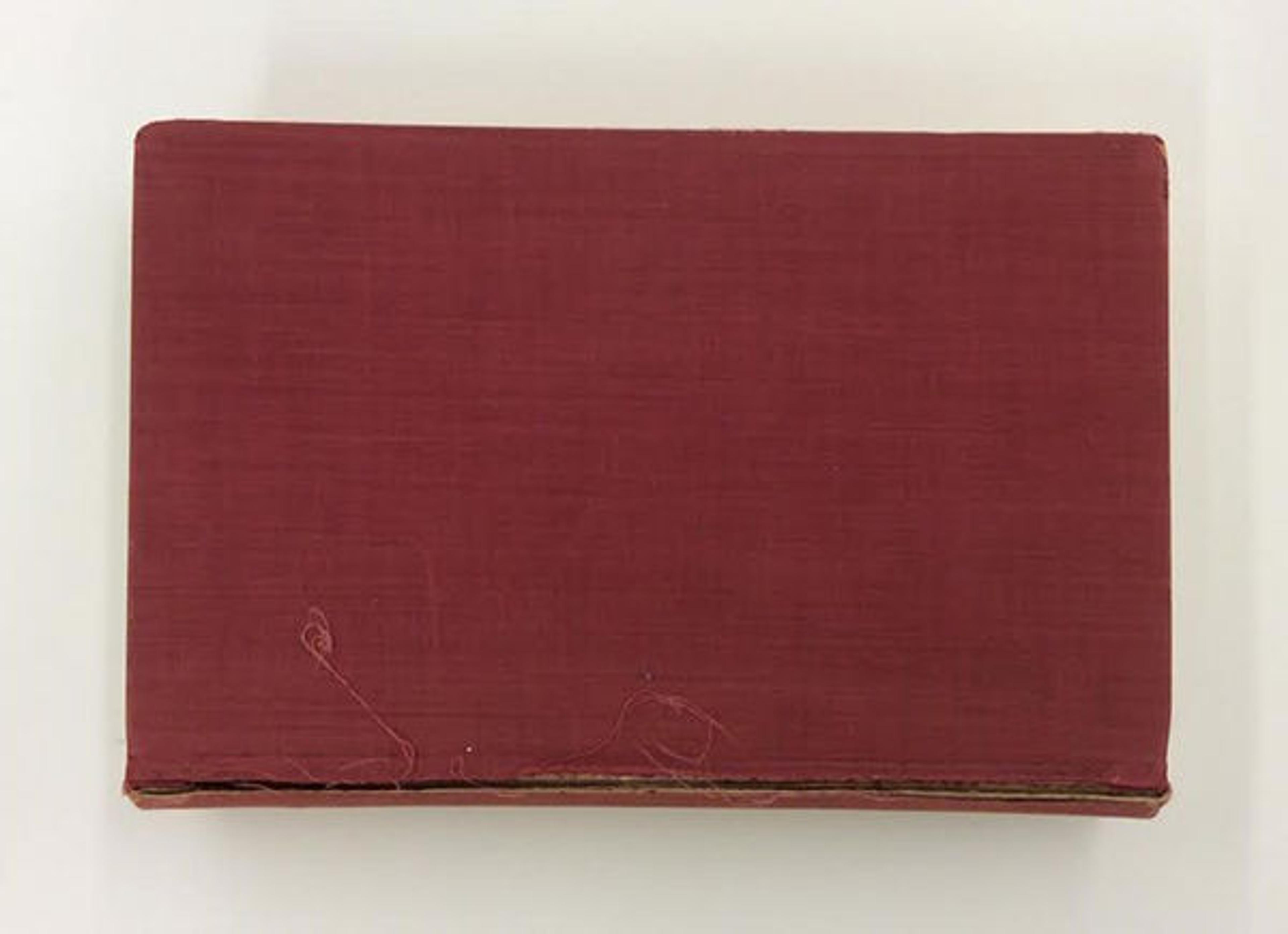
Broken hinge on a nineteenth-century leather binding
«In our previous post, we discussed the safe handling of books with a specific emphasis on headcaps. In this post we'll review book joints and hinges, which also easily incur damage—often as a result of opening books too quickly and/or without adequate support. We'll then conclude by offering a few simple solutions to prevent this type of damage from happening to your favorite books.»


The joints (exterior binding material) and hinges (interior binding material) make up the flexible juncture where the book covers meet the spine.
Although joints and hinges usually start out strong, over time the materials weaken due to factors such as poor environmental conditions, natural aging, and repeated use, which flexes the joints and hinges. During the bookbinding process, leather is pared very thin at the spine area. While paring minimizes the bulkiness of leather and makes the covers more flexible and attractive, it also eventually weakens the binding. Any leather binding, regardless of visual evidence of damage, may have weakened joints and hinges. Keep this in mind as you open these types of books, to prevent the jolting experience of having a board break off in your hands.

Broken joint on a nineteenth-century leather binding

Deteriorating leather hinge which will incur further damage if not handled properly
Leather is not the only delicate material used in bookbinding; other common materials such as vellum, textile, and paper can be equally weakened by inadequate environmental conditions and overuse.

Full cloth binding with broken joint
The strength of joints and hinges is especially endangered when a book is opened and the boards are left unsupported or hang at greater than a 180-degree angle. To properly open book covers and prevent damage, follow these steps:
- Place the book on a flat surface and slowly open the front cover (never more than ninety degrees until you are sure the book can sustain it). Check the condition of the joint. Repeat the same process for the back cover.
- Perform a visual inspection to ensure that the boards are attached and that there are no tears in the joint area. If the joints are intact, the book is probably in good condition (however, the apparent good condition of the book could be deceiving, so stay mindful).
- New books that may never have been opened also require slow and careful opening and support.
- Regardless of the condition of the book, it is generally advisable to support its boards by using a wedge-shaped support. In the absence of wedges, rolled-up towels or small pillows can be used (see below).
- For books with torn joints or tightly bound books with covers that resist opening, such as vellum bindings or books with warped boards, support both covers and use light "snake" weights to keep the pages open.

A wedge support and an additional stack of boards can be used to adjust to the thickness of the spine and adequately support it. A weighted "snake" is used to keep the page open.

Instead of book wedges, a homemade support solution could be rolled-up towels or small pillows.
Books become weakened when they are not handled properly. By learning how to safely handle books, we can prolong the integrity of the book and minimize the risk of damage that may result in lengthy and expensive conservation treatment. For more information on the safe handling of books, consult the Book Conservation Lab's Book Handling Guidelines for Watson Library Staff and Patrons.
Related Link
In Circulation: "The Fragility of Headcaps and the Safe Handling of Books" (May 27, 2015)